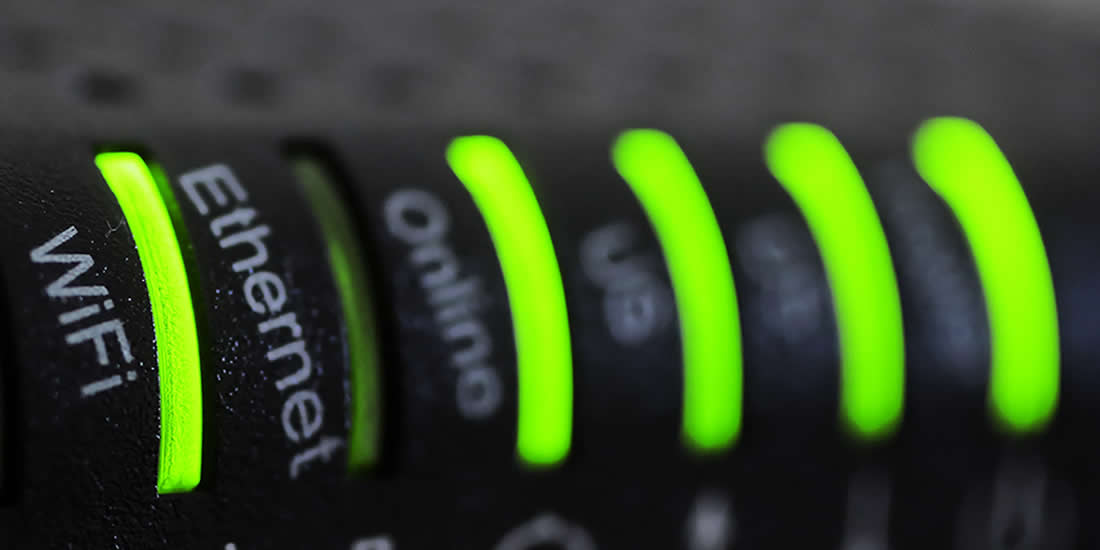Look at all the pretty lights!

If you’re reading this using WiFi, chances are you are using a router. Not sure what a that is? Look for the little black box in a corner of the room that connects to a socket in the wall - the one that pumps the internet into your house and allows you to surf, stream, look at naked pictures and email your friends. Now try to answer this question without checking first: how many blinking lights does your modem have? Take a wild guess. Five? Ten? Now the bonus question: do you know what all those lights are for?
Even if you do, you probably don’t care. A modem is a pretty boring black box, and you rightfully expect it to work silently and unobtrusively. Even if these lights can inform you that your orthogonal frequency-division multiplexing has some errors, what would you do about it? It is not like you are going to break out the soldering gun and multimeter go to town on your home network. Chances are you will unplug, reboot, call the phone company or throw it away altogether and just buy a new one. Life is just too short.
So why do almost all modems have these bands of flashing Christmas lights on them? Is it because consumers want a 24-hour light organ playing behind their sofa? Do the lights really add to their functionality and ease of use? The answer, of course, is “no” to both. Modems have a string of lights because they have been designed by engineers, manufactured by engineers and marketed by engineers. At no point in the journey from design to manufacturing to marketing, has anyone ever asked: “Do people actually want these lights?” In fact, my own modem lights are covered with a strip of black tape, because I like my bedroom dark and don’t care much for a lightshow that looks like mice are operating a rodent discotheque behind my bed’s baseboard.
Think about how strange that is. In a marketplace, the development of consumer products tends to flow with the wants and needs of consumers, trying to delivering what the end user is asking for. And yet here is a box full of electricity-wasting, resource-wasting lights that nobody asked for. I’m not saying that my modem is personally responsible for melting the Ross ice shelf, but it does add up. We all pay for the LED lights themselves, for the unnecessary electricity they use and for the potential future costs of recycling the rare Indium and Gallium metal compounds contained in them. It seems like a lot of trouble for nothing.
The underlying problem is an engineer-driven culture that churns out new tech products, without enough consideration for what the user actually wants and needs. For years, we put up with ugly black electronic boxes with lumpy, awkward chargers that block other outlets; with heaps of long, snaking cables behind our desks, with unnecessary switches and buttons disguised as “features”, fat, useless manuals in twenty languages. And, yes, unnecessary lights.
But the end of this era is near. Consumers are becoming more and savvier and demanding. The global marketplace allows smart entrepreneurs to jump into markets that were previously closed off to them. The future belongs to innovative products that deliver a simple promise to the consumer: ”I listened to you. I understand what you want and I deliver what you need.”
It should only be a matter of time before someone produces a modem or router that has no lights. Just imagine the marketing possibilities: Green. Easy. Energy-saving. First in its kind, first to market. So to all ye engineers and developers out there, here is a call-to-action for you: go out there and find your audience. Listen to them, find out what they actually want and then build it. You might be surprised how popular you will become.
Luuk F. van Heerde